Until May 4, VCRB Gallery in Antwerp is showcasing the first solo exhibition by the Lithuanian painter Victor Paukstelis in Antwerp. The artist is best known for his large-scale, monochromatic paintings that reinterpret iconic imagery from art history. His paintings are characterized by subtle surface textures, erasures, and geometric accents that emphasize the act of painting itself over the image it depicts. In an era in which painting seems to be heavily influenced by novelties—from artificially saturated colors up to the implementation of AI in the creative process—Paukstelis’ work appears to escape the clutter and clatter or chitter and chatter of new image-making trends to remind us that painting is not just about images, but about the act of painting itself. And where the image ends, the painting truly begins.
On a surprisingly warm spring evening in Antwerp, after a seemingly endless search for a parking space in the beautiful center of the city of Rubens, my patience was rewarded when I walked through the doors of VCRB Gallery to visit Victor Paukstelis’ solo exhibition “Untitled… After…” showcasing nine oil paintings on canvas. I have been following the artist closely for four years now, and although it was his first exhibition I could finally visit, I could not have asked for a better occasion. For those who have followed his trajectory, the exhibition appears to be the culmination of everything that has been building over the past years. I had the pleasure of interviewing Paukstelis two years ago for CAI’s online magazine, and within the first few instances when entering the exhibition space, I could see how all the different puzzle pieces we discussed all seem to fall into place.
It was also my first time seeing his work in the flesh instead of from a screen. And what a difference it makes. The sheer materiality and joyous use of paint in the form of virtuous light-footed brushstrokes, expressive painterly interventions, and the roughness of specific areas. Some passages were painted with just a few confident strokes; others are heavily worked and reworked, particularly in key compositional zones, shifting the focal point of his source material. This materiality and the different experience of images you are convinced to know well starts with the size of the paintings. The works are large—approximately 200 x 200 cm—and while they are rather monumental, they are not painted large to merely impress with its scale. I have seen numerous large figurative works that dazzle from afar but fail to remain enjoyable from up close. With Paukstelis, the opposite is true. The closer one comes, the more the works open up, and the more you realize the works are about a lot more than the iconic images they reference.
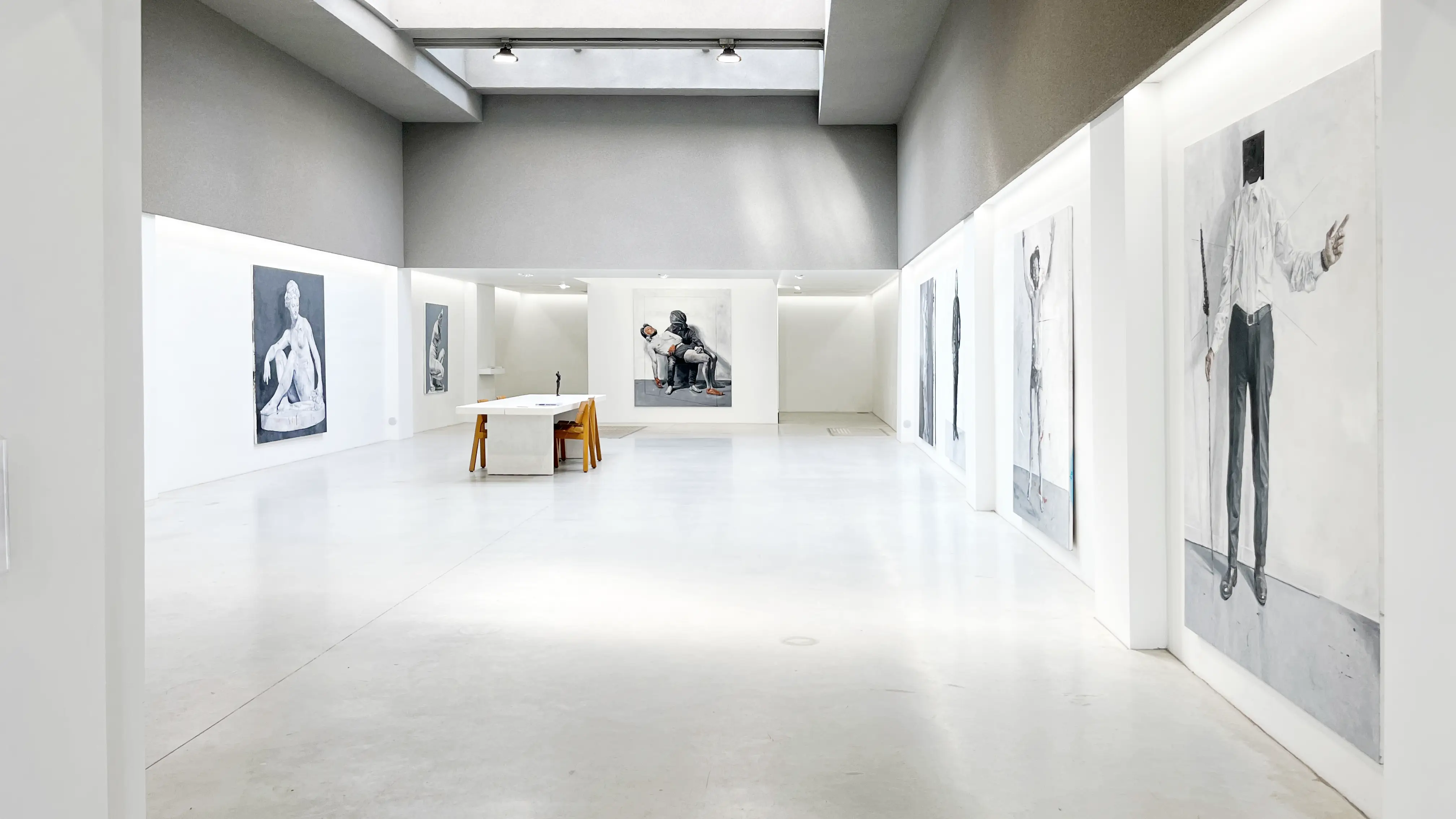
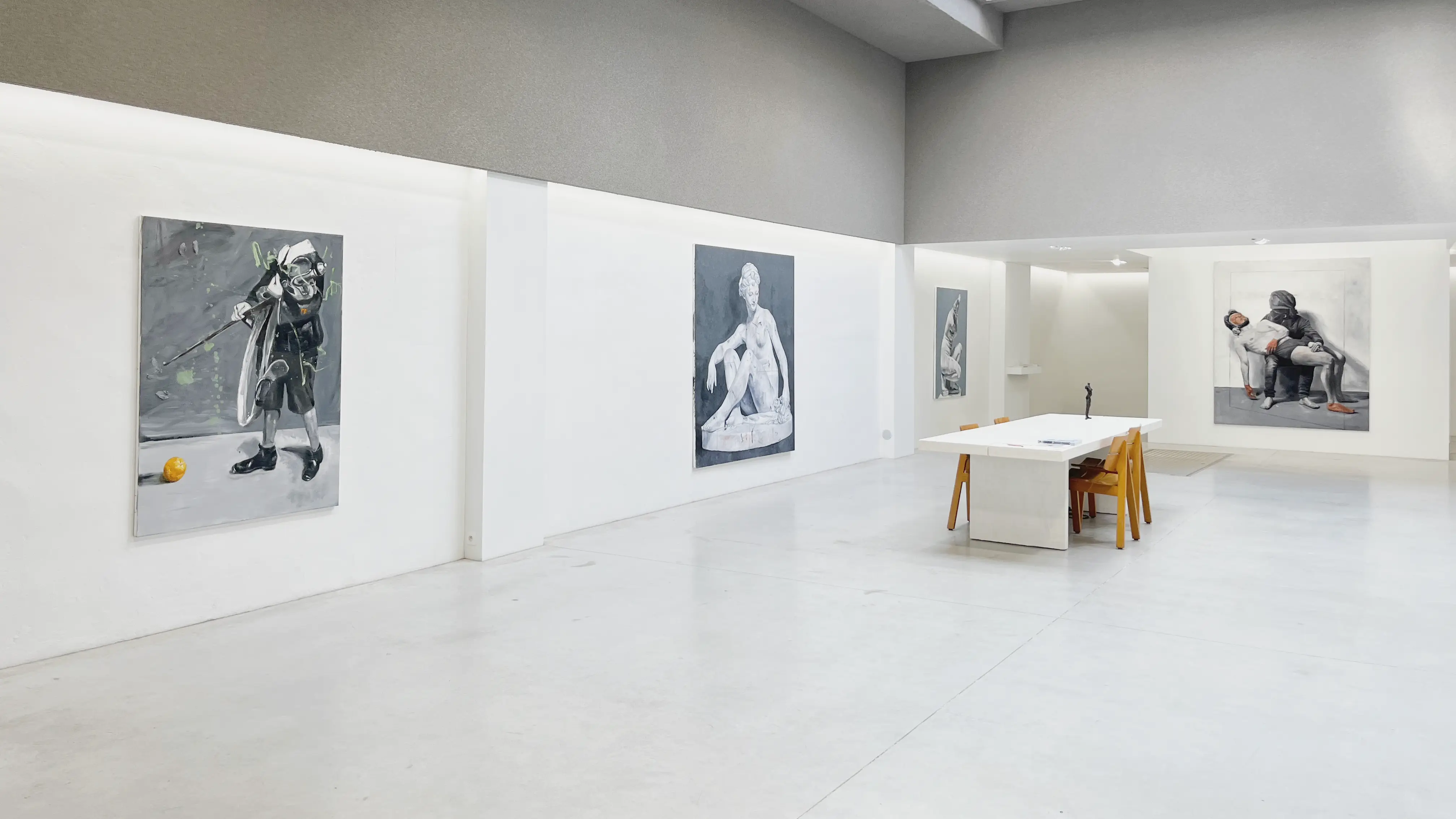
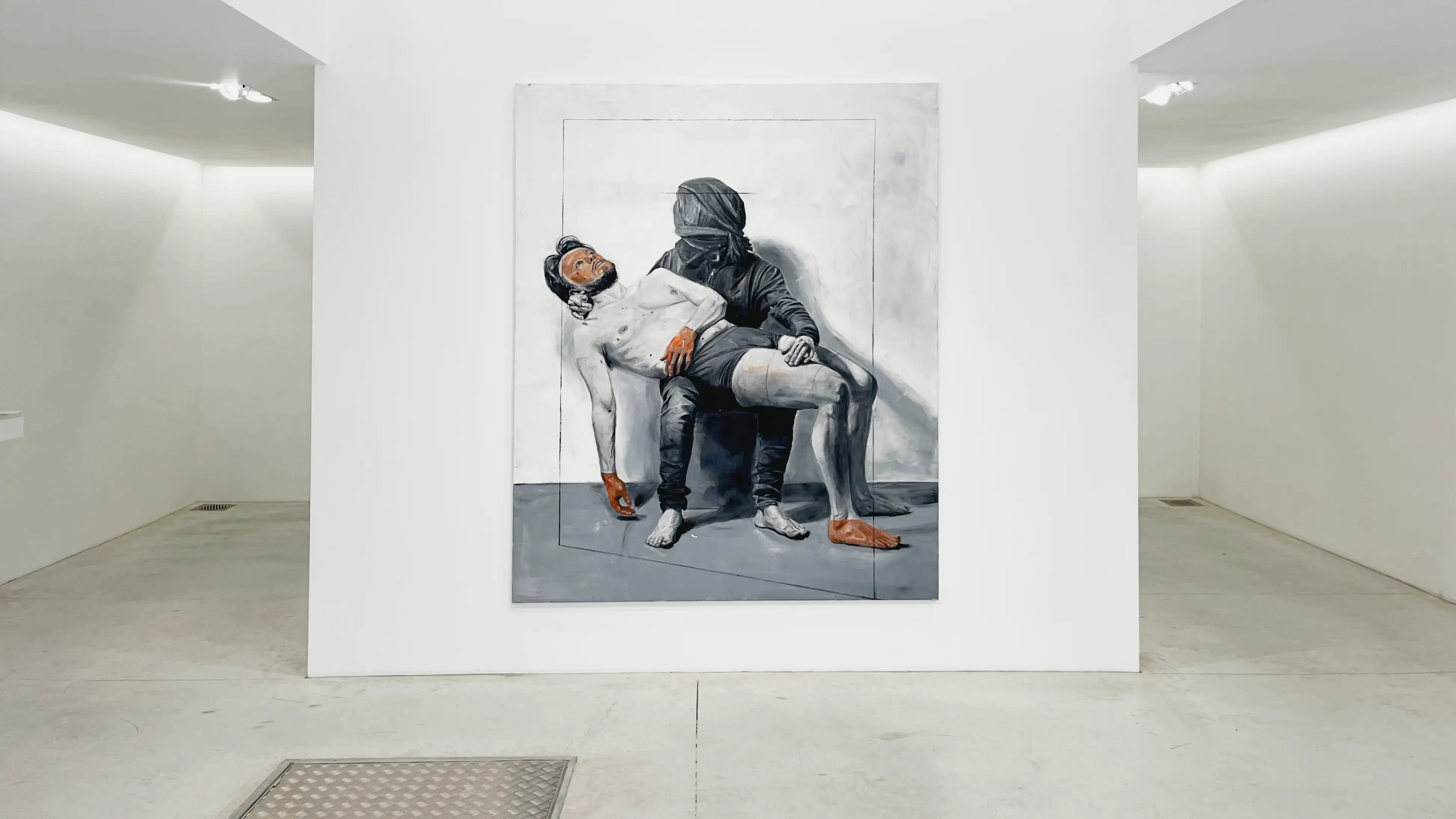
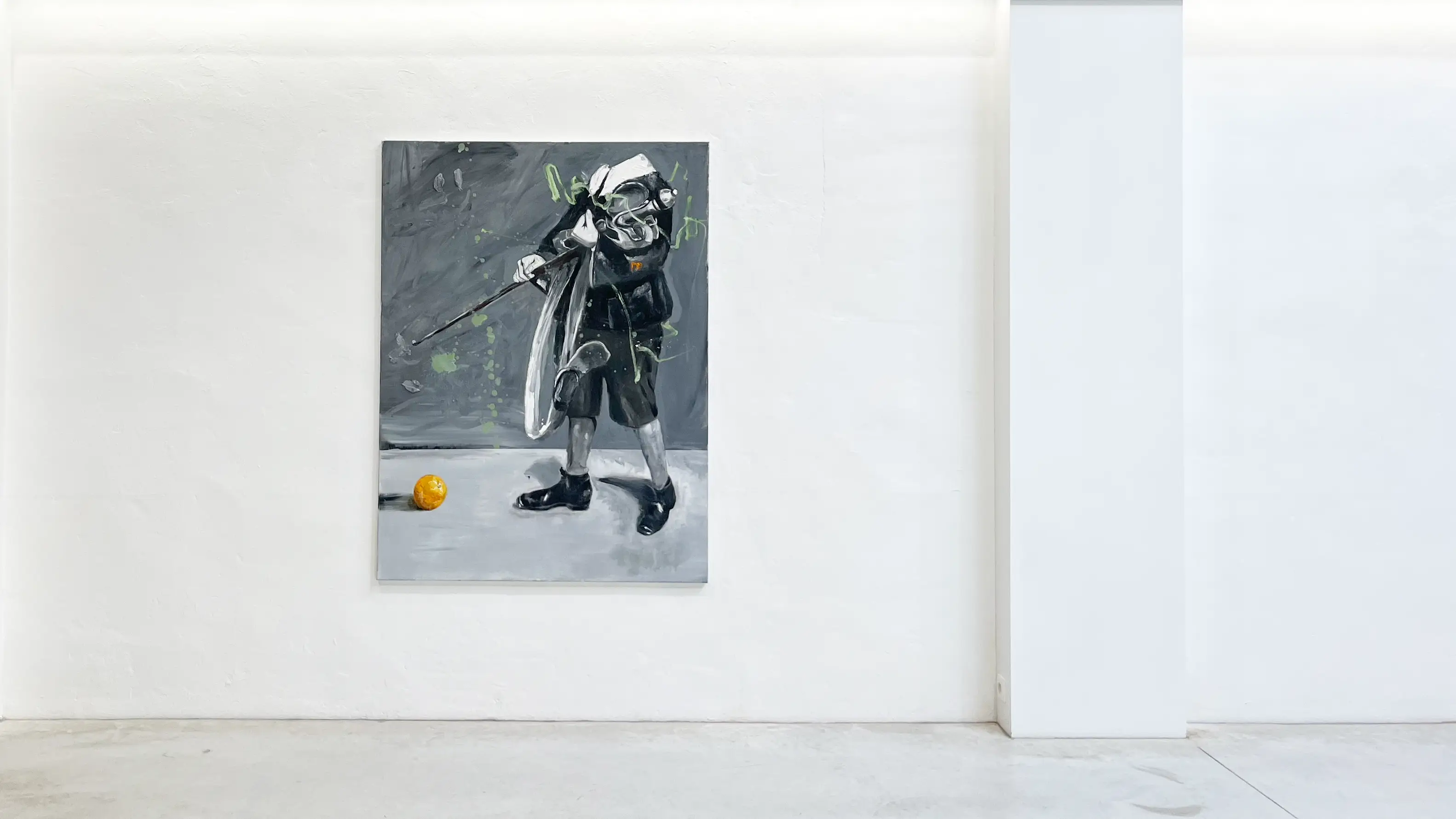
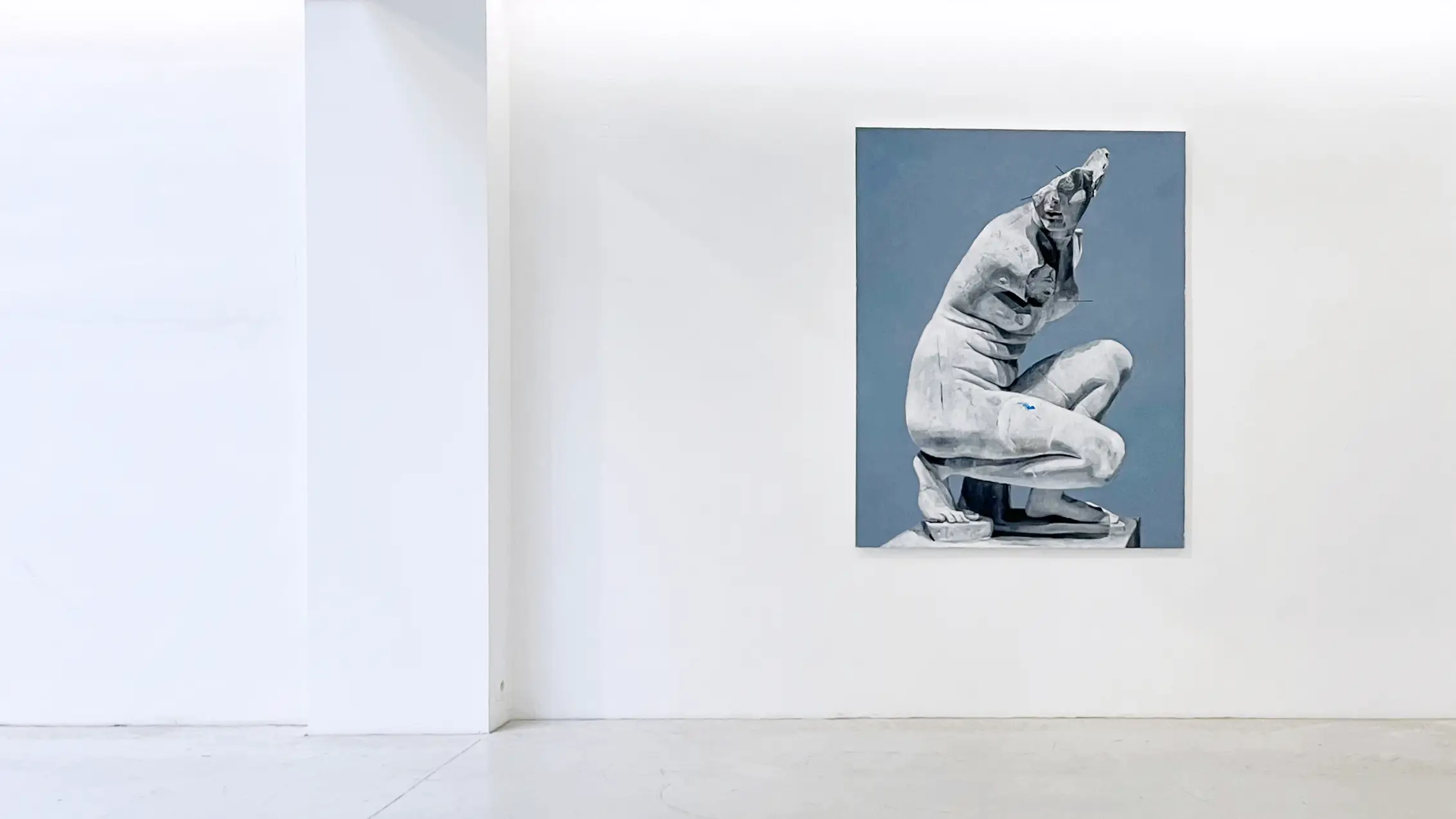

Paukstelis’s style is unmistakable. His muted color palette, use of greys and monochromes, and consistent isolation of figures from iconic images create a signature visual language. These borrowed motifs—from Velazquez, Manet, Tassaert, Michelangelo, and more—are rooted in collective memory. He does not attempt to hide the sources of his images—unlike many of his contemporaries who work with found materials and veer toward problematic forms of appropriation in which they try to hide the reference by making it their own and presenting the simulacra as an original. No, Paukstelis’ appropriation remains transparent and genuine. He remains true to the image, celebrating, dissecting, and exposing it in the utmost genuine and respectful manner.
Despite the dominant role of iconic imagery, his work is not about imitation or emulation. The artist has often spoken about how he begins a painting not with a fixed concept but with an image that hypnotizes him. The idea develops in the act of painting. There is no rigid blueprint; he follows the logic of the brush and lets the act of painting guide him. The images are instantly recognizable yet strangely unfamiliar in his hands. He removes the narrative, the context, and even the concept in which the subject and its pathosformel used to present itself, as if peeling away its skin. This particular aspect is, of course, emphasized by his monochrome palette, which often evokes the notion of a grisaille underpainting that still needs to be glazed with color to provide that top layer, that facade that we are used to seeing. Paukstelis cleverly plays with this notion in works such as Untitled (III) (2025), in which four rough glazes cover the face, both hands and one foot of the surreal Pieta inspired by Michelangelo’s iconic marble sculpture for the Vatican in Rome.
His sculptures, such as Untitled (after Jean-Pierre-Antoine Tassaert) (2025) and its 2024 counterpart, further extend this logic. They recall the paragon—the historical debate between painting and sculpture. But here, there is no competition. There is no attempt to rival the original. They are a structure of memory, homage, and painterly invention. Paukstelis’ works also touch on the theme of memory in a profoundly personal way. He spoke in our 2022 interview about his mother, who had dreamed of becoming a visual artist but never realized that dream. During her youth in Soviet times, she created a wall covered with cut-out reproductions of artworks from magazines—a makeshift gallery. That wall, although faded, was a formative presence for Paukstelis. It represents the porous boundary between personal and cultural memory, between inherited dreams and individual expression.
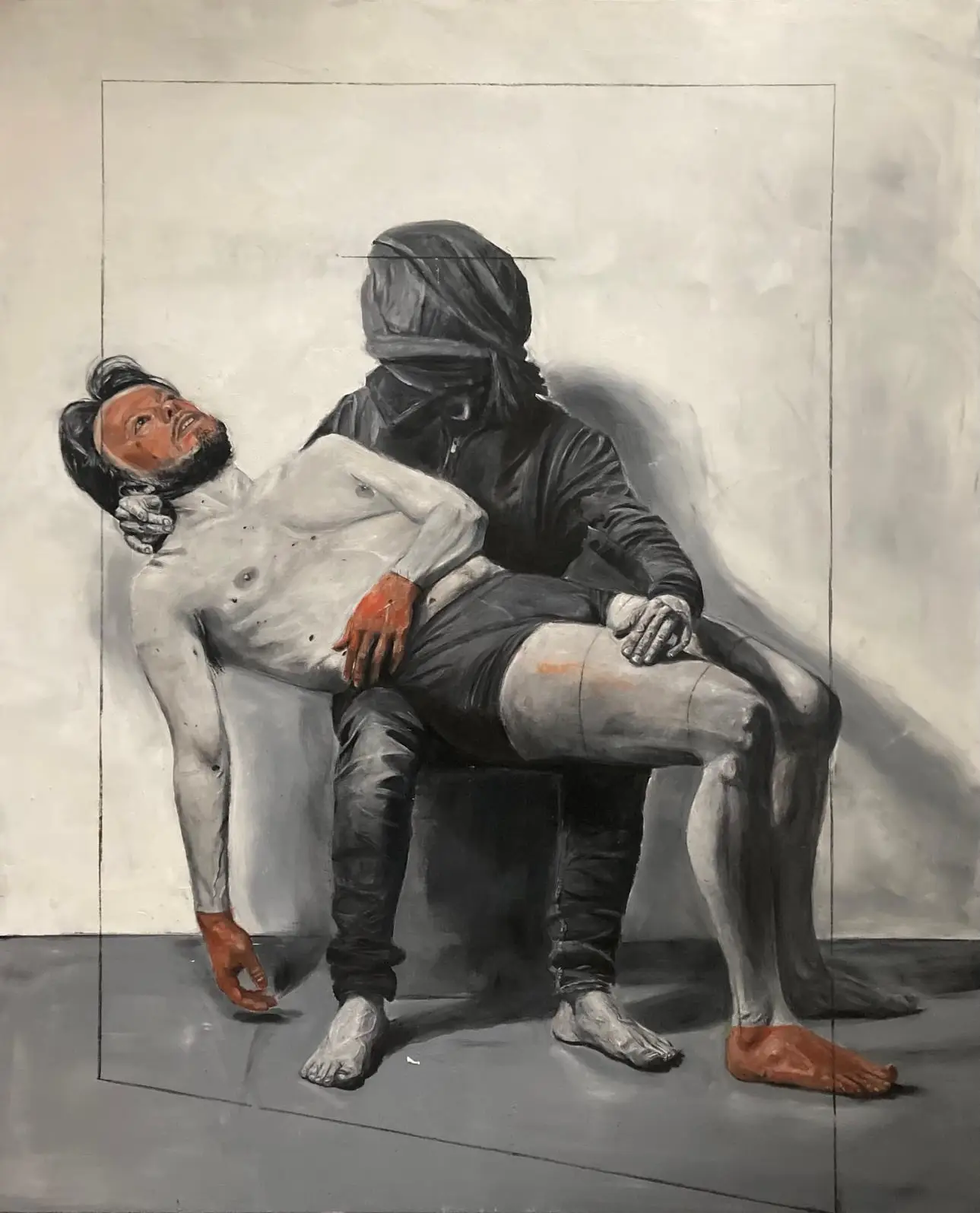
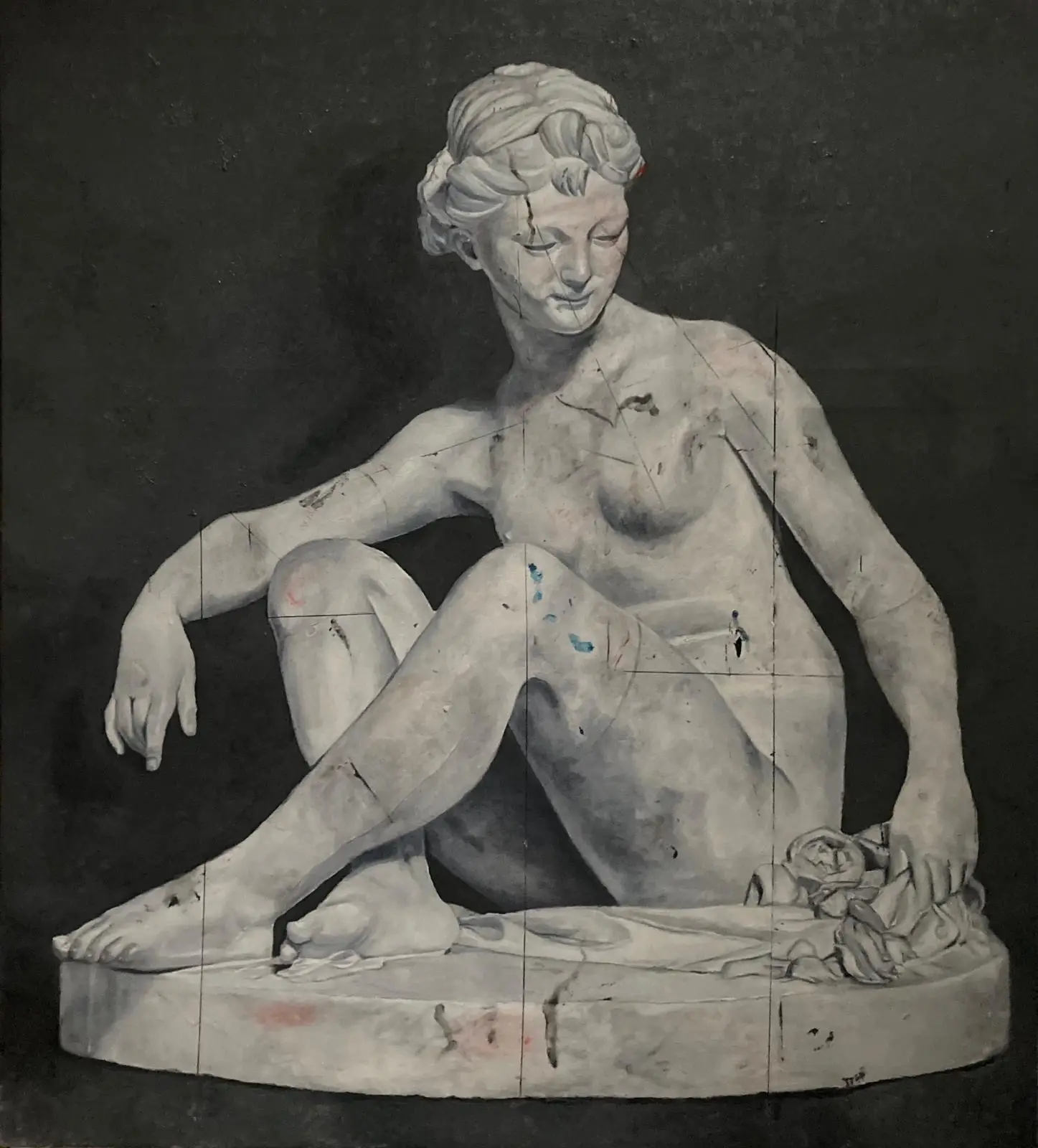
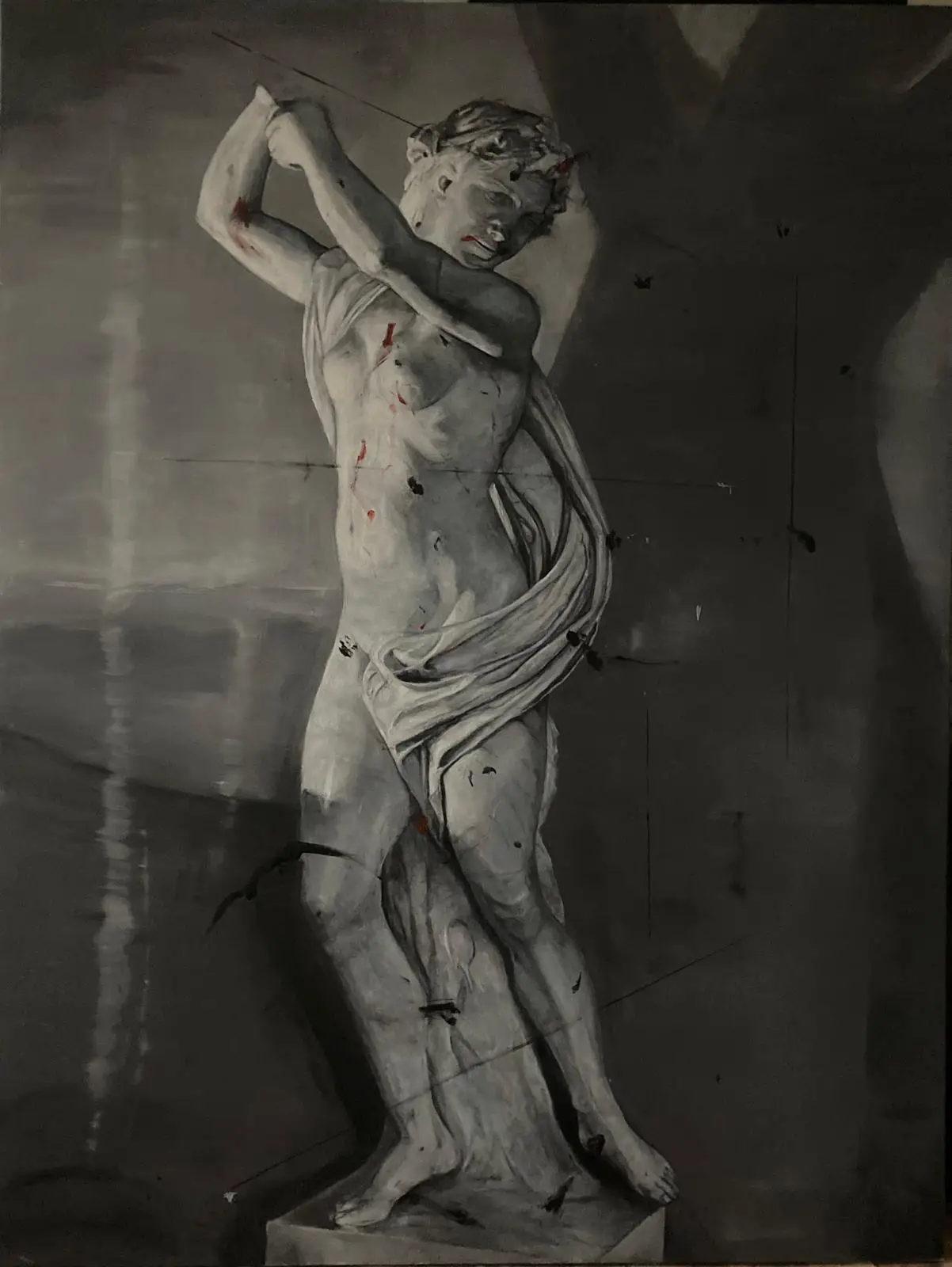
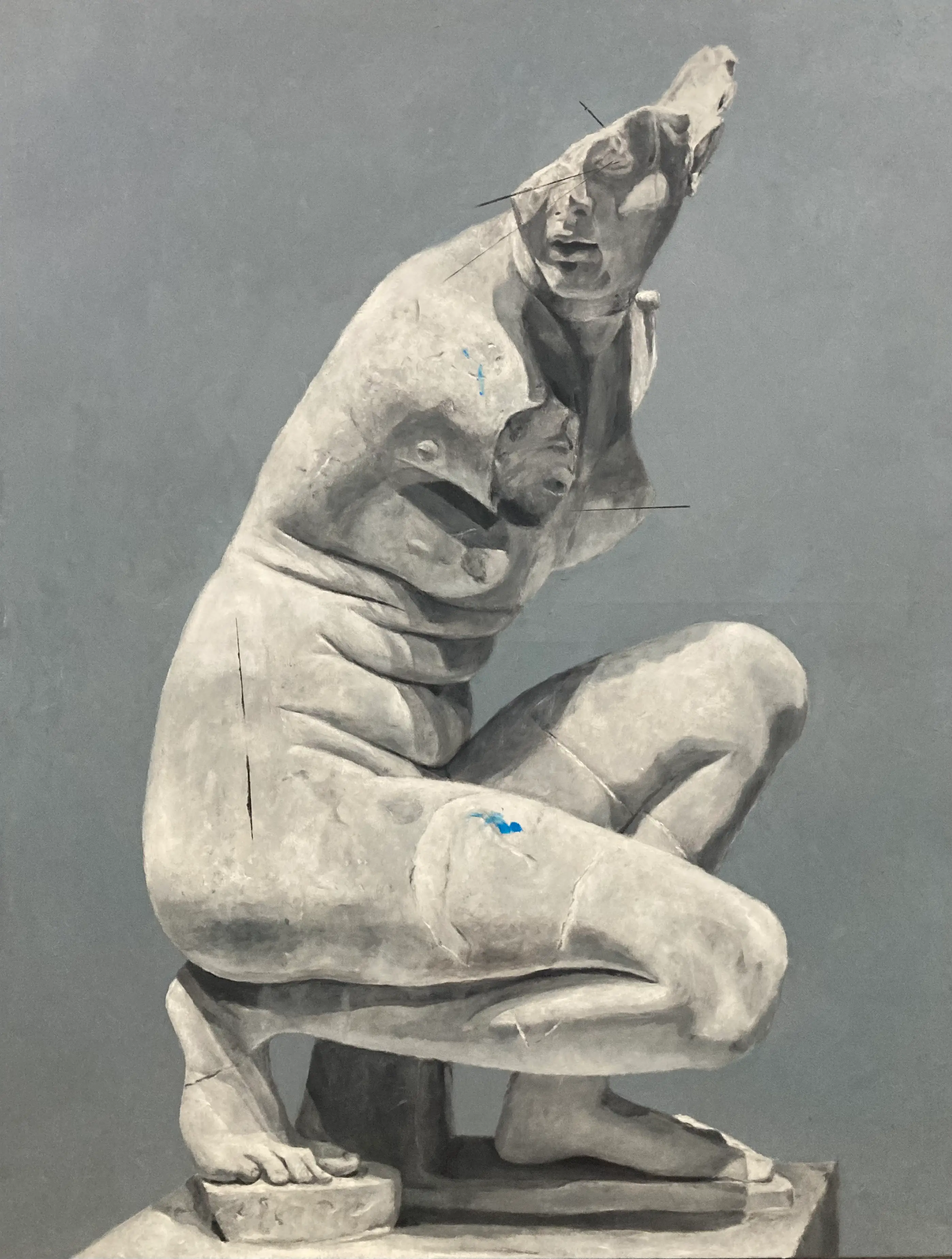
In a way, his entire practice is a continuation of that wall. Memory in his work is never linear. It is layered and contradictory. He once said it is difficult to separate what belongs to collective memory from what belongs to individual memory. In his paintings, these distinctions blur. The iconic coexists with the intimate. The distant becomes personal. A baroque gesture or a neoclassical statue holds not only art historical weight but personal resonance. Ultimately, can one genuinely own an image, if not of how it lives on beyond the object? These questions should be asked in an era of image-making novelties, such as software to edit existing imagery up to the arrival of AI image generation. However, reducing Paukstelis’ work to the use and contemplation of existing imagery would be a catastrophic faux pas.
Beyond the image, his works are full of painterly interventions: gestural dashes, glazes that veil and reveal, geometric lines altering the spatiality of the image, asserting the existing structure, guiding our gaze, or following the gaze of the figure. In some cases, he removes or replaces an object, like the sword in the hands of a young boy derived from Edouard Manet’s Boy with a Sword, removing not only the sword but his entire face, yet adding an orange and abstract dashes of green paint. The absence of faces is a recurring motif in his practice. Think of the veiled figure of the aforementioned Pieta and Malevich’s Black Square being placed in a collage manner on top of his figure. These disruptions are subtle but impactful. They create analogies for new meanings and new experiences without denying the original.
These interventions also manifest themselves on a purely painterly level. The scale, combined with the limited amount of visual information, demands the paint to do the hard work to make those large canvas surfaces interesting. In the painting itself, we can actually see the process of painting from up close, when standing in front of it at a distance where the iconic image starts to disappear, and what is left are strokes and smears of paint. Now, we begin to look at the painting and not the image. Considering his background as a musician, it is no coincidence to see the changes in tempo of the painting when inspecting its surface. An interplay emerges of painting fast and slow, of improvisation and deliberation. You can feel the tempo changes as you move across the canvas. There are allegros and adagios, moments of virtuosity, and pauses for breath. The surface records the pace and rhythm of its making. Something unexplainable is inherent in painting, which refuses to be conceptualized or theorized in any way or form. Paukstelis paintings are exactly about this unspoken quality residing in the act and experience of painting.
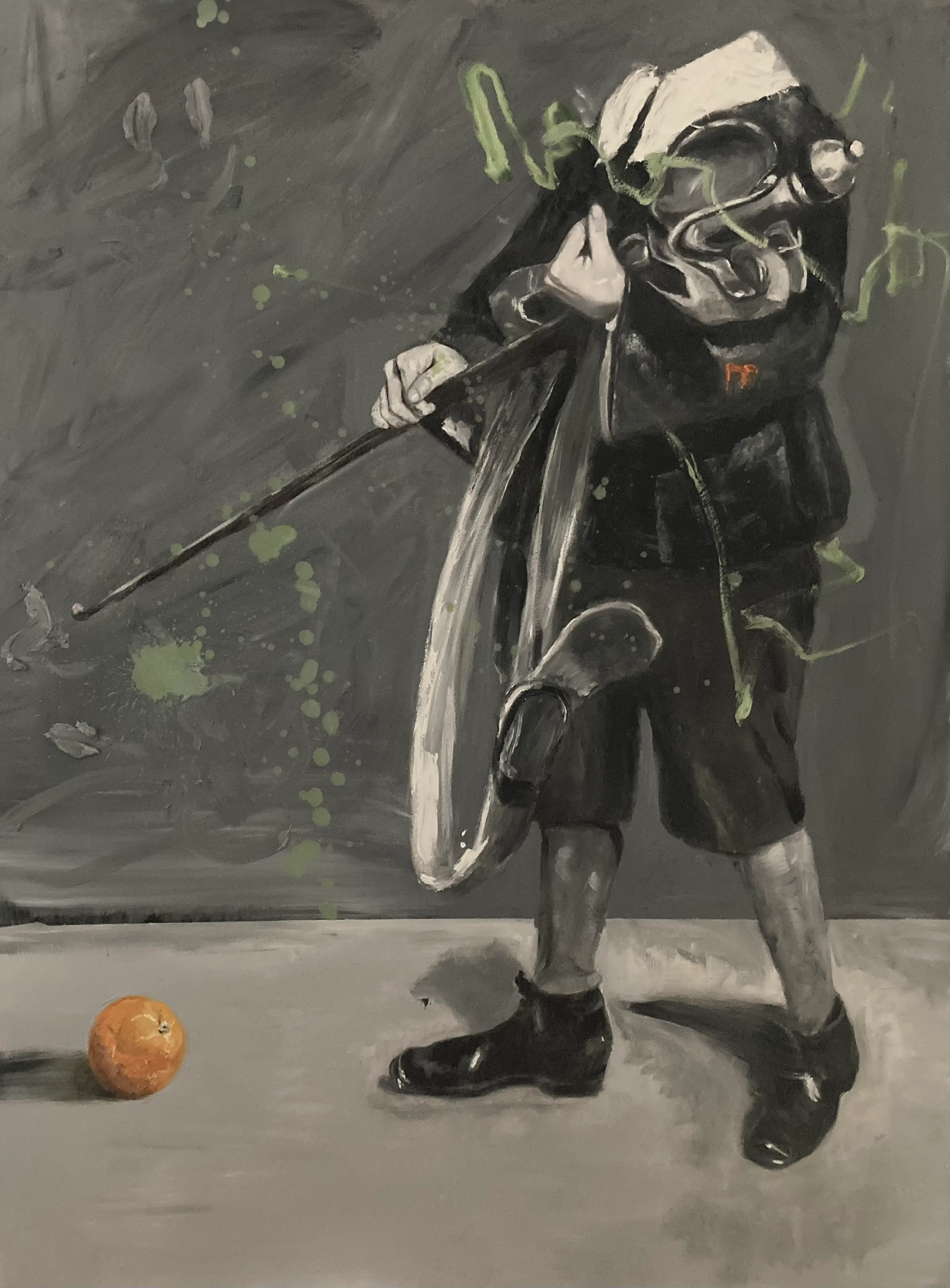
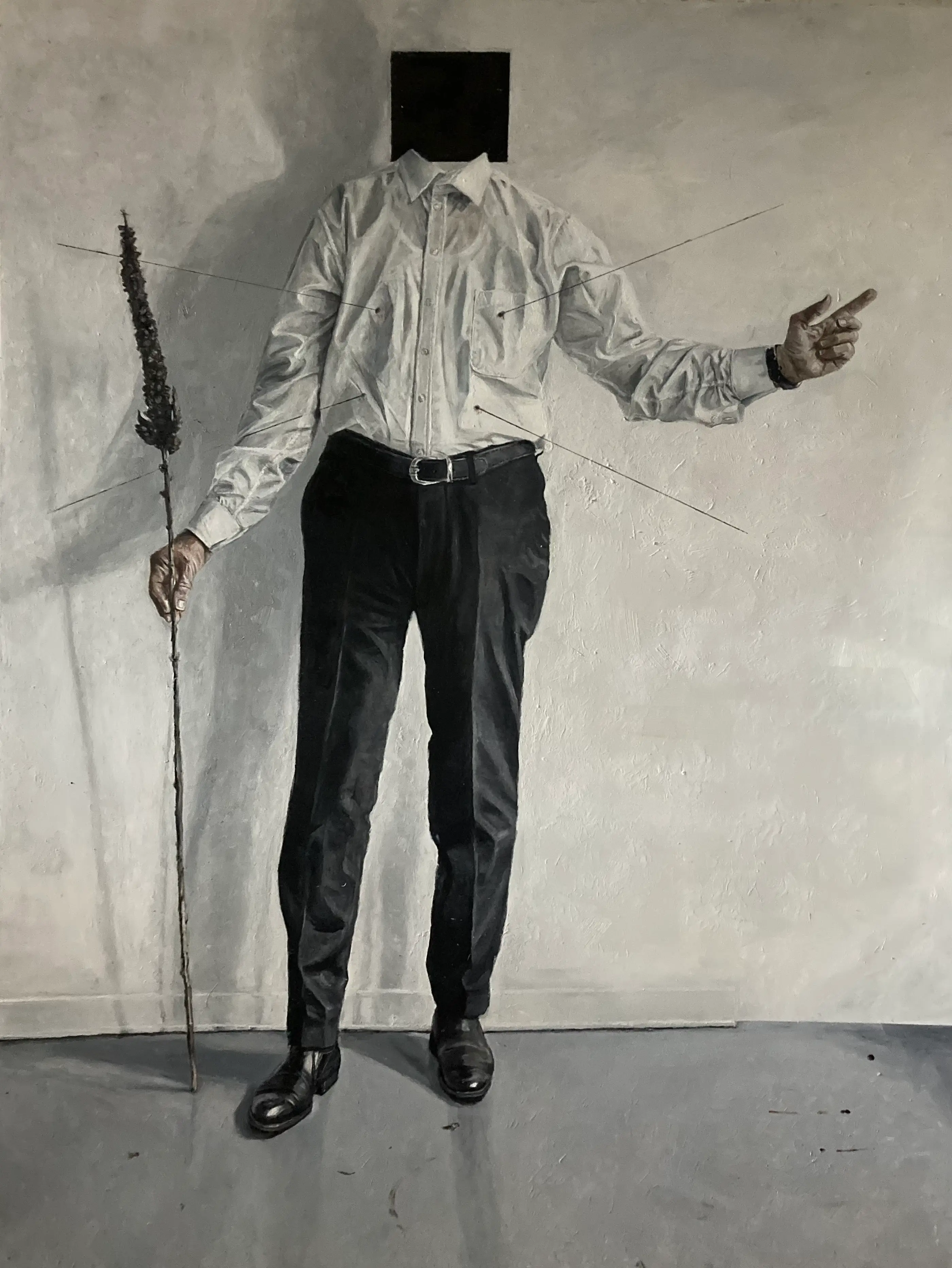
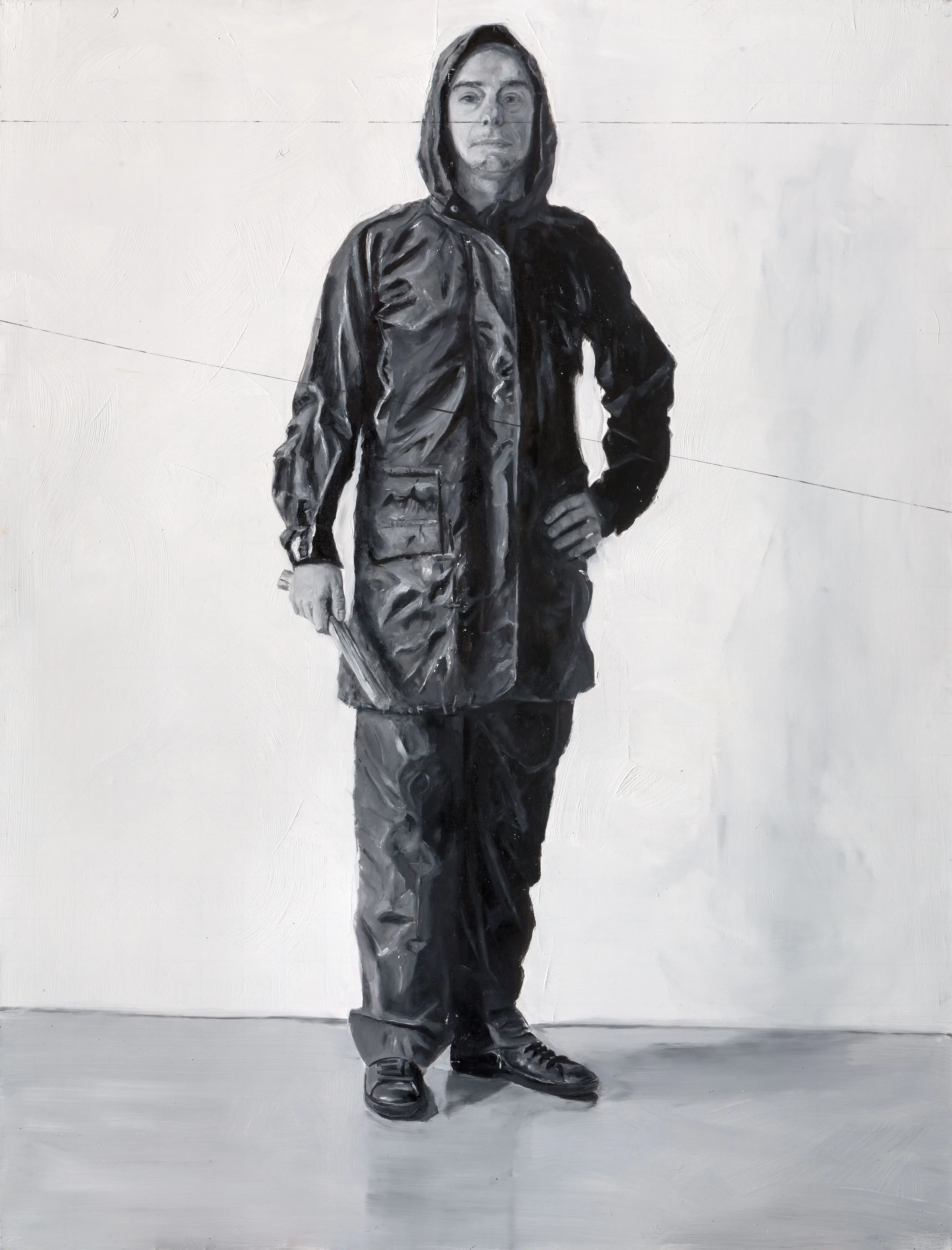
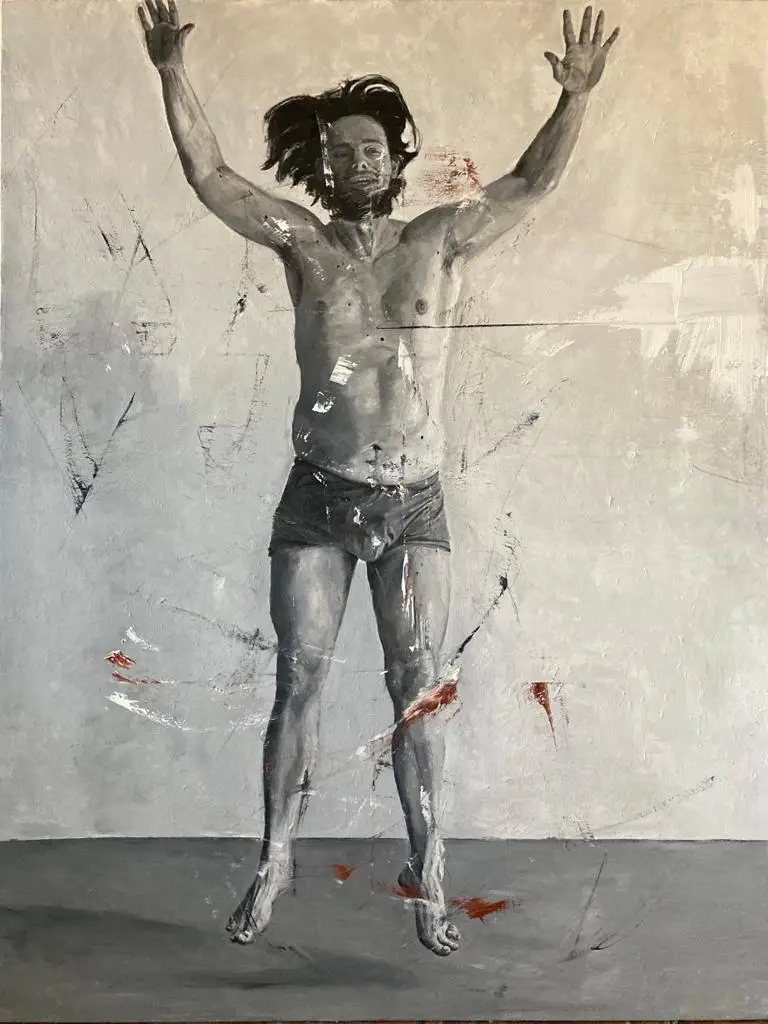
In the end, the appropriated subjects become an alibi. An alibi for brushwork. An alibi for slowing down or speeding up. An alibi for mistakes, for decisions, for chance. An alibi for painting. And an alibi for experiencing a painting. Because in the end, the image is only the beginning. The act of painting—that material, temporal, embodied experience—matters most. He shows that painting is not about producing an image. It is about the image as a vehicle for something else. His work resists the endless reproduction of digital culture. It resists the notion that all images already exist. And it resists the idea that AI can replace the artistic gesture. Because what Paukstelis shows us is that the image is merely a starting point. The real work begins after that. He proves that even in an age where images seem to pre-exist their creation, where everything has been seen or simulated, painting remains a vital, irreplaceable act. And in that space between what we recognize and what we come to discover, one sees true painting. After all, where the image ends, the painting begins.

Victor Paukstelis, born in 1983, is a Lithuanian painter residing and working in Vilnius, Lithuania, who graduated from Vilnius Academy of Arts (VAA). From 2009 up to 2012, he had a residency at Cité Internationale des Arts de Paris. The artist has been actively involved in exhibitions since 2011, including solo exhibitions at VCRB Gallery in Antwerp, Belgium; POUSH in Paris, France; the National Museum of Art in Kaunas, Lithuania; and HOOP Gallery in Hamilton, Canada. Furthermore, notable group exhibitions include presentations at the 7th Biennial of Painting in Zagreb, Croatia; the Angermuseum in Erfurt, Germany; the Biennale Européénne des Blanc Manteaux in Paris, France; the Gdansk Academy of Arts in Gdansk, Poland; and the Kedainai Regional Museum, Lithuania. His works are featured in institutional collections such as the Modern Art Centre in Vilnius and the Lewben Art Foundation.
For more information, please consult the artist’s website here or contact VCRB Gallery here.
Cover: Installation view of “Victor Paukstelis: Untitled… After…” (2025) at VCRB Gallery in Antwerp, Belgium.
Last Updated on April 2, 2025
About the author:
- Tags: HOME


